Group Site
(in Japanese)
(in Japanese)
(in Japanese)
Prometech Simulation Conference(PSC)
(in Japanese)
Prometech Group Recruiting Site
(in Japanese)
(in Japanese)
(in Japanese)
(in Japanese)
Prometech Simulation Conference(PSC)
(in Japanese)
Prometech Group Recruiting Site
(in Japanese)

version 5
SIMUNIMA is software that converts CAE analysis result files into a file format that can be input into CG editing software. It enables efficient visualization using CAE analysis results, high-quality rendering movies, sharing of 3D views of large-scale analysis results, and XR content development.
The conversion data is lightened by reducing particle (point) data and surface polygons and specifying the required conversion range. Everything is easily configured with the GUI, and motion data is automatically applied to the target object at the time of conversion, eliminating the time and effort required for configuration.
Using SIMUNIMA, you can import simulation results to Digital Content Creation tools such as Maya, 3ds Max, Blender, as well as game engines like Unity, Unreal Engine, and so on.
SIMUNIMA for Unity enables easy data conversion, rendering, and content output using Unity. It automatically converts and reads data, sets up the camera, lighting, timeline, and other scene settings, and allows you to select textures from a pre-prepared library of basic materials. You can easily create CG-rendered videos and interactively manipulatable application output without any CG or content editing knowledge. Note: A unity license must be purchased.
Documentation for creating CG-rendered videos using Blender is also included.
Create high-quality, photo-realistic videos to effectively promote your products and technologies on the web, SNS, papers, presentations, events, and exhibitions.
Output from SIMUNIMA for Unity in desktop application format to create an interactive 3D viewer. Sharing analysis results in 3D contributes to business efficiency.

It will be possible to expand into XR (VR/AR/MR) content and digital twins, such as VR content for disaster prevention, collaboration systems for remote sites, and simulators for skill evaluation.
Support analysis data file generated by Particleworks ver8.1 and Granuleworks ver3.1 additionally. Polygon motion conversion and conversion of Granuleworks’ non-spherical models are supported.
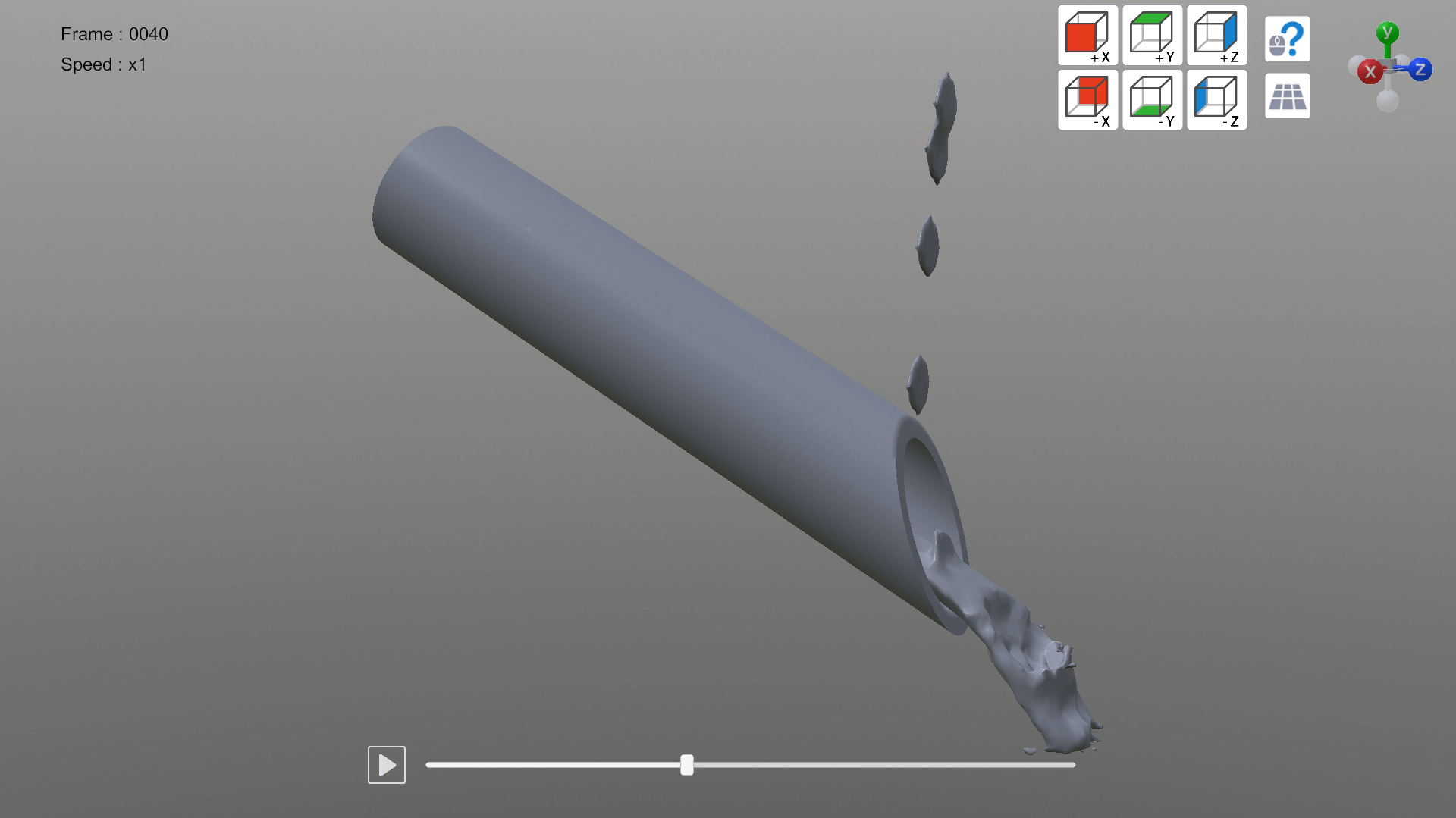
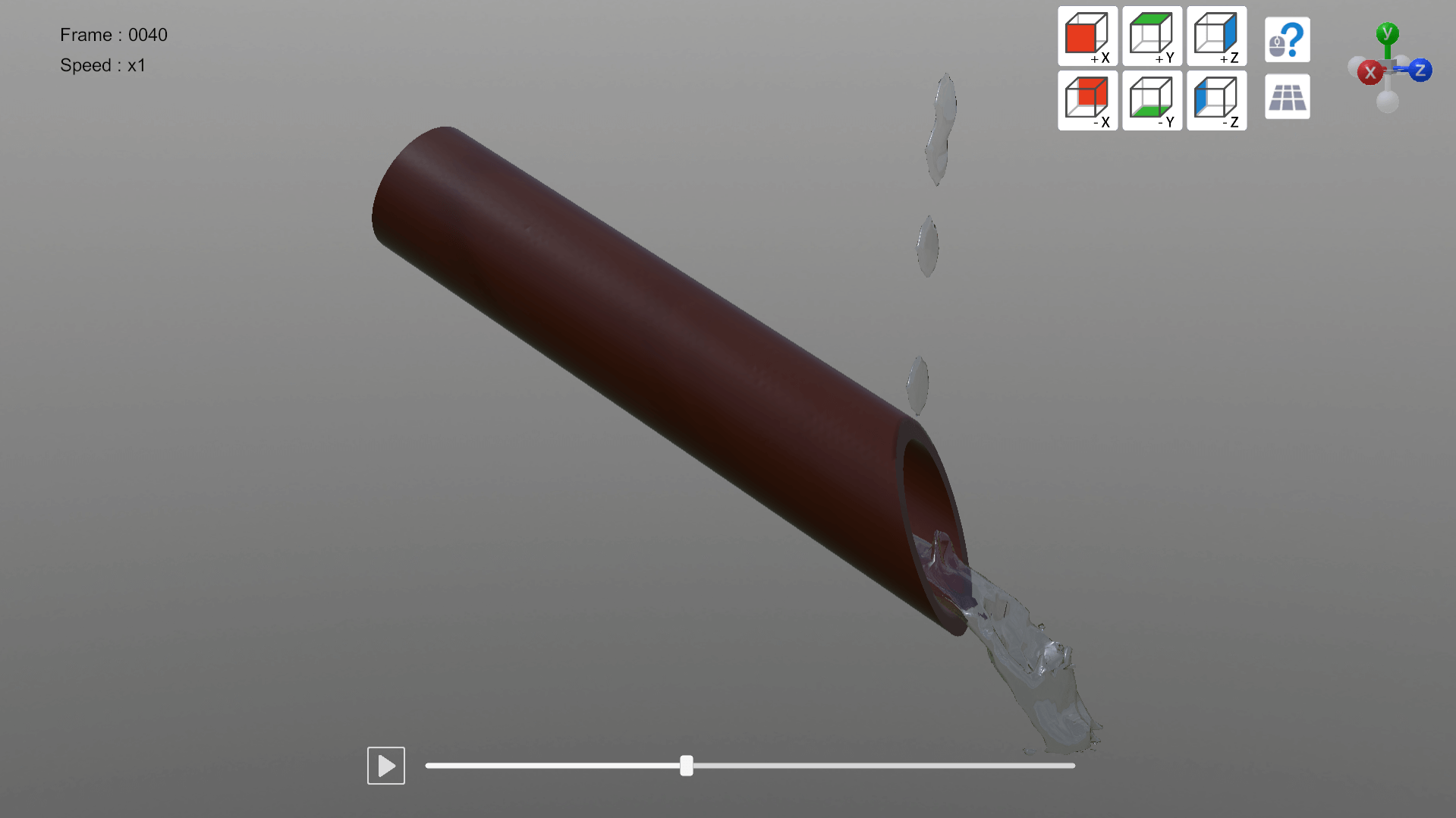
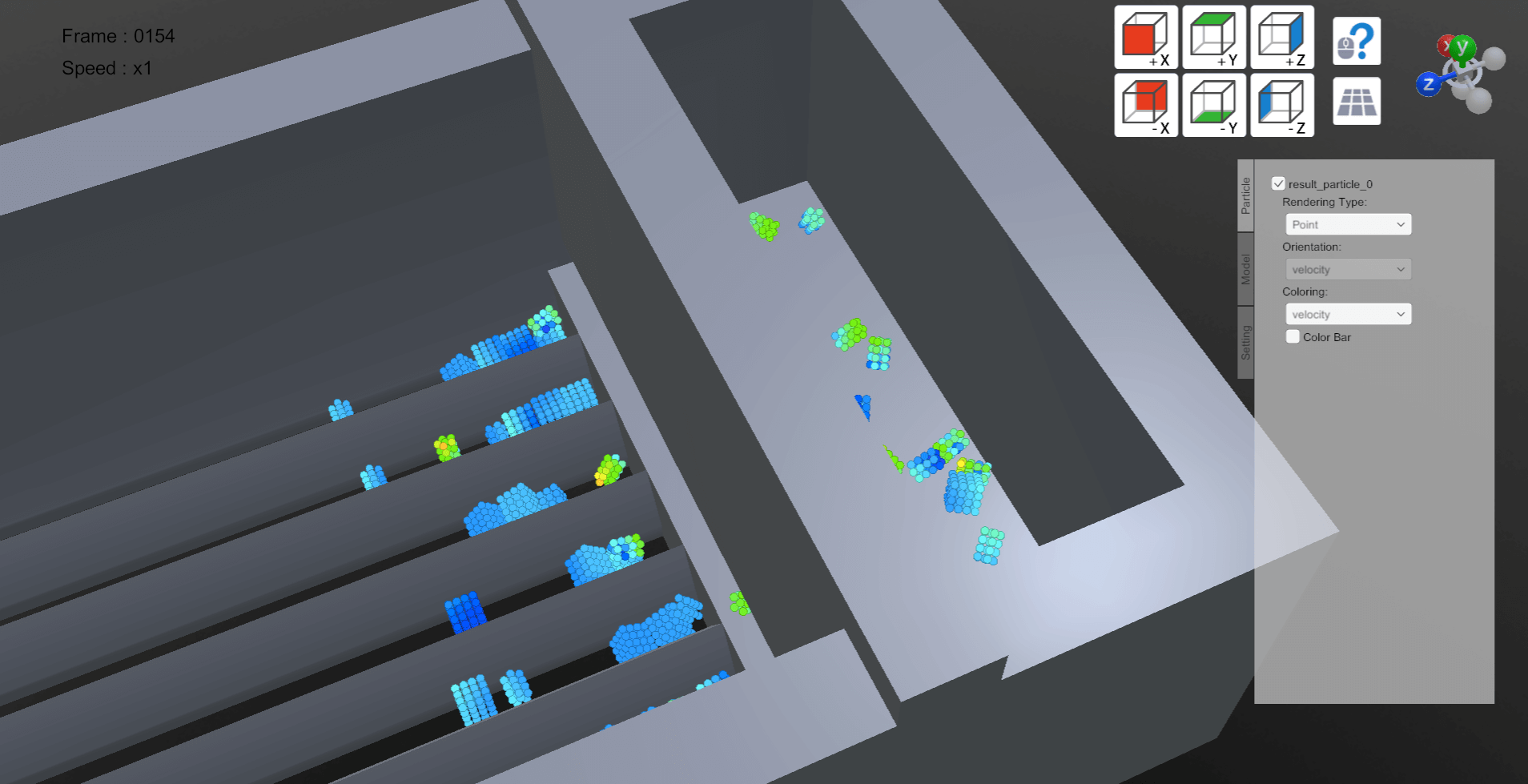
Grid data output from Particleworks/Granuleworks can now be converted to OpenVDB format.
Using SIMUNIMA for Unity, you can visualize the three-dimensional structure of grid data.
SIMUNIMA for Unity also allows visualization of Volume data from ParaView.
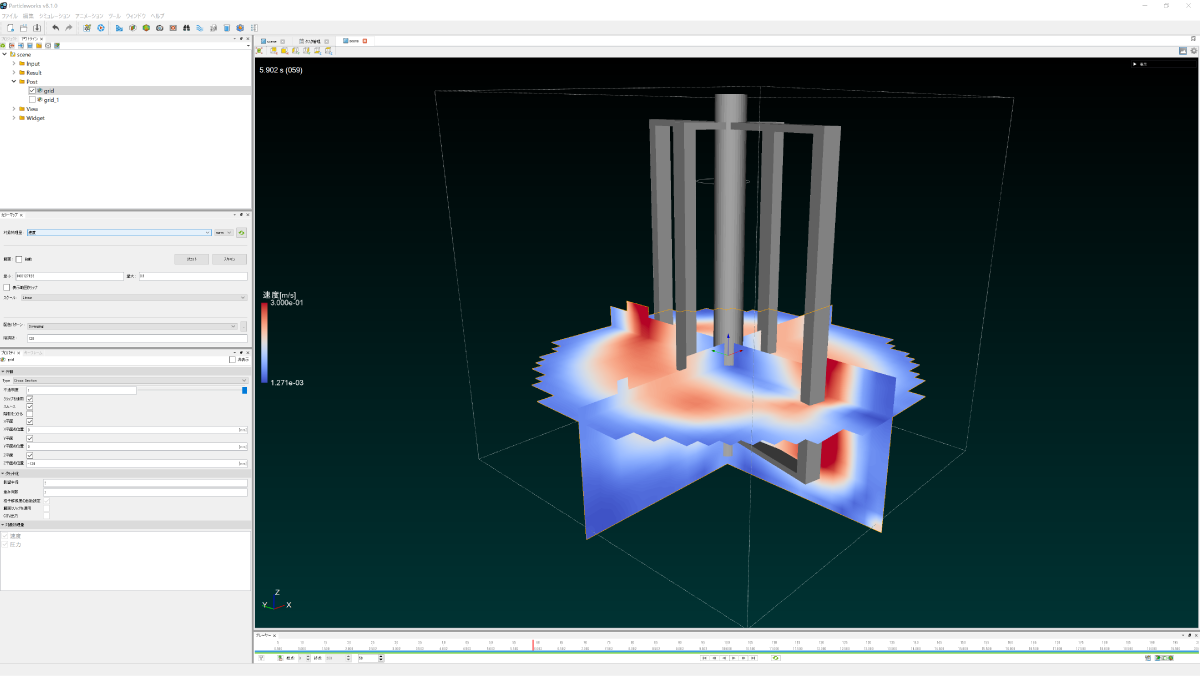


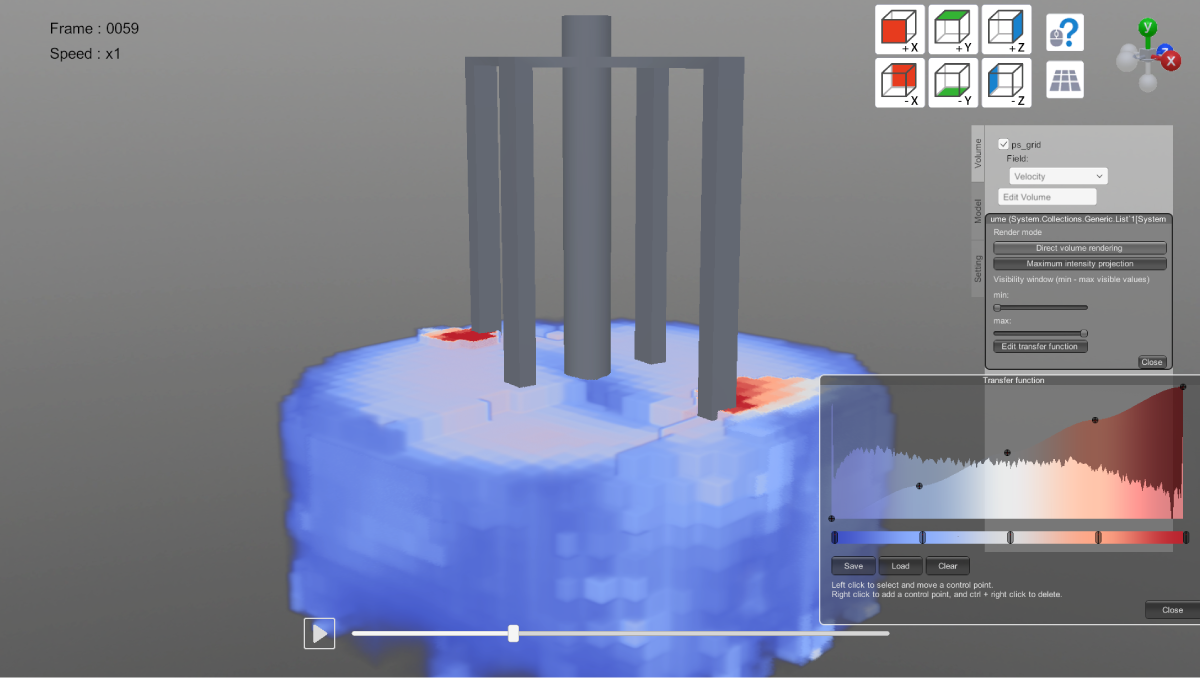
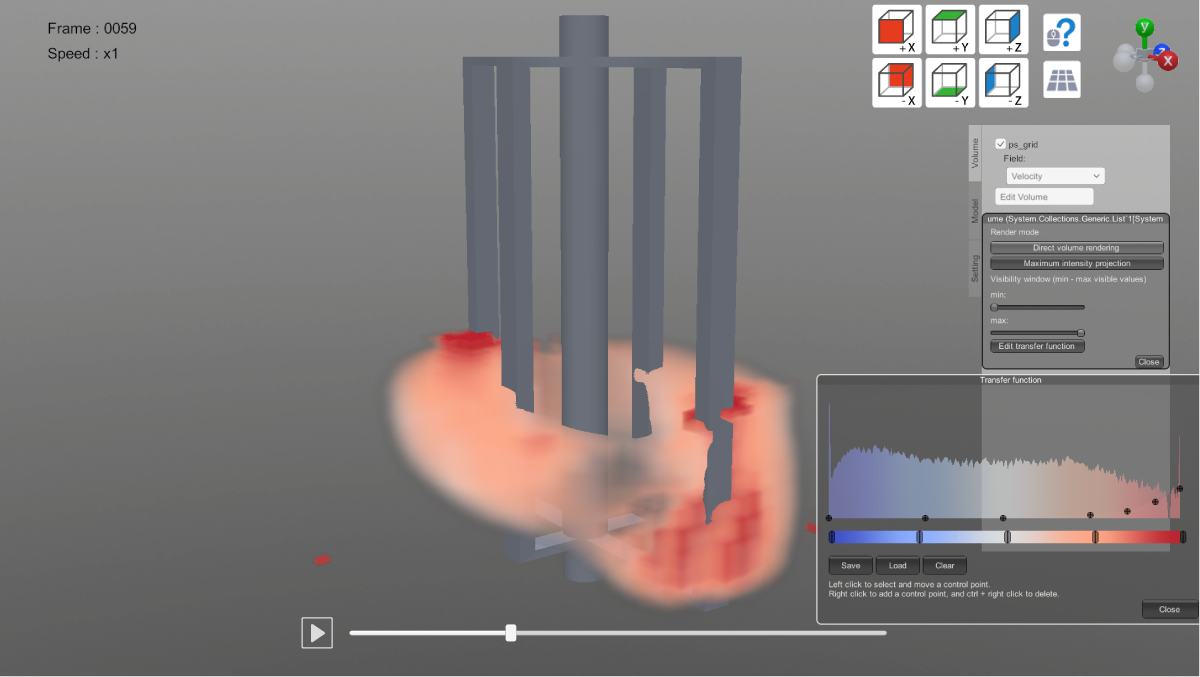
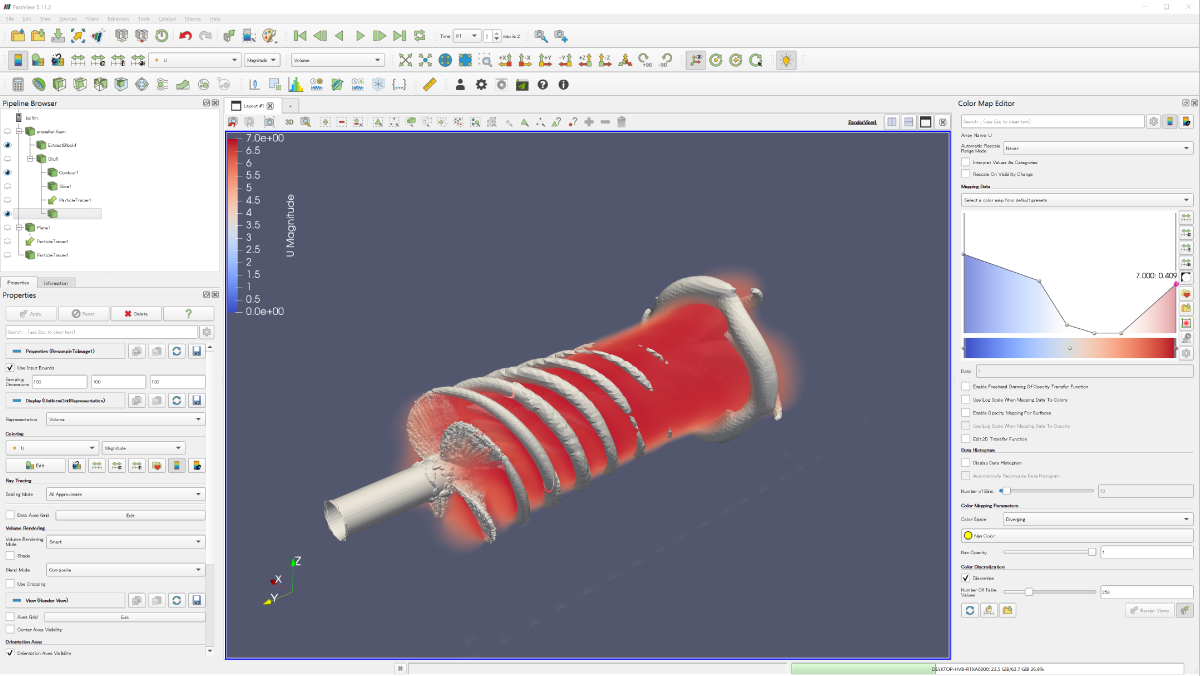


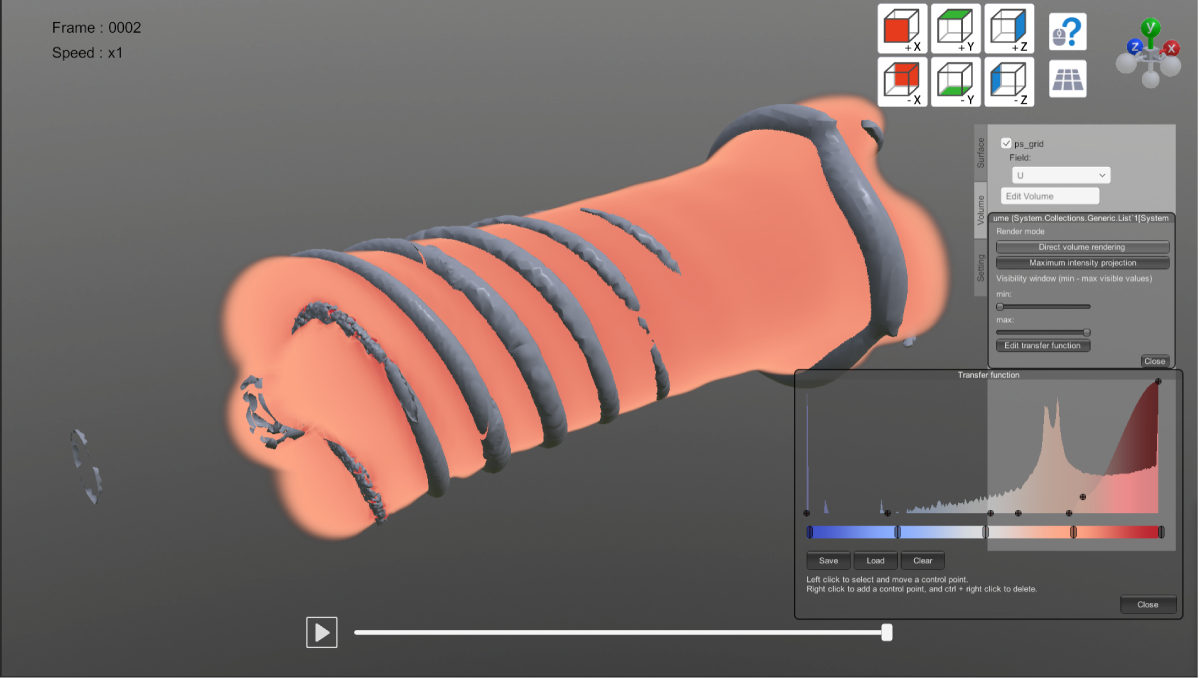
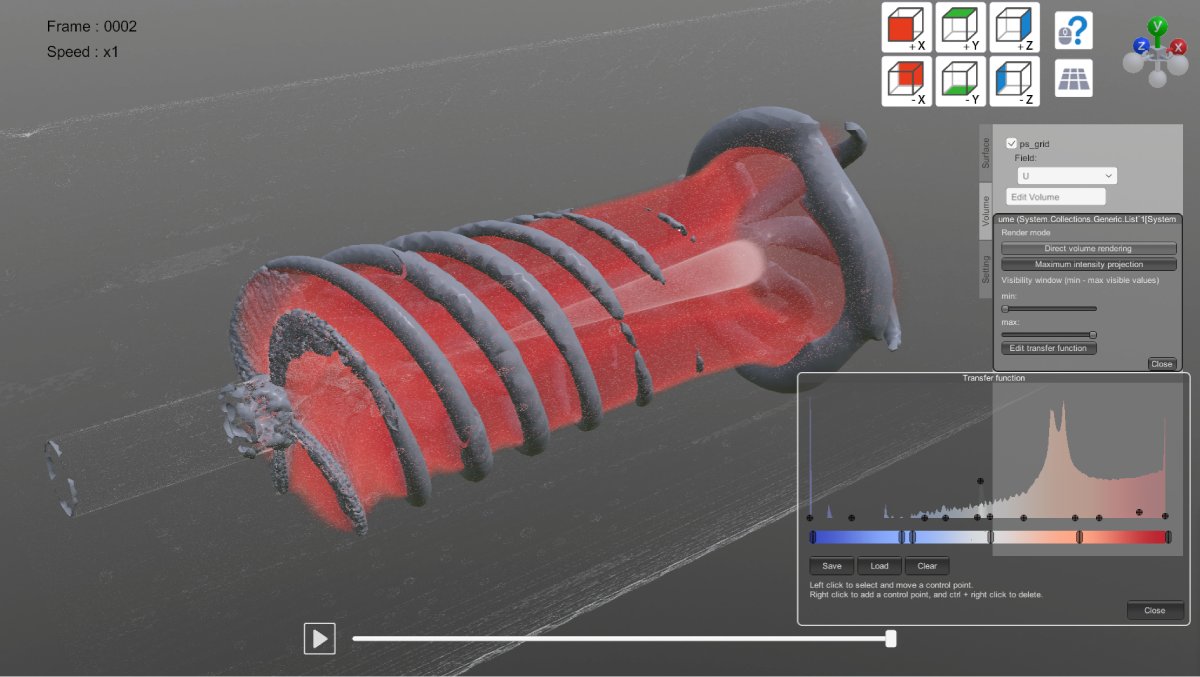

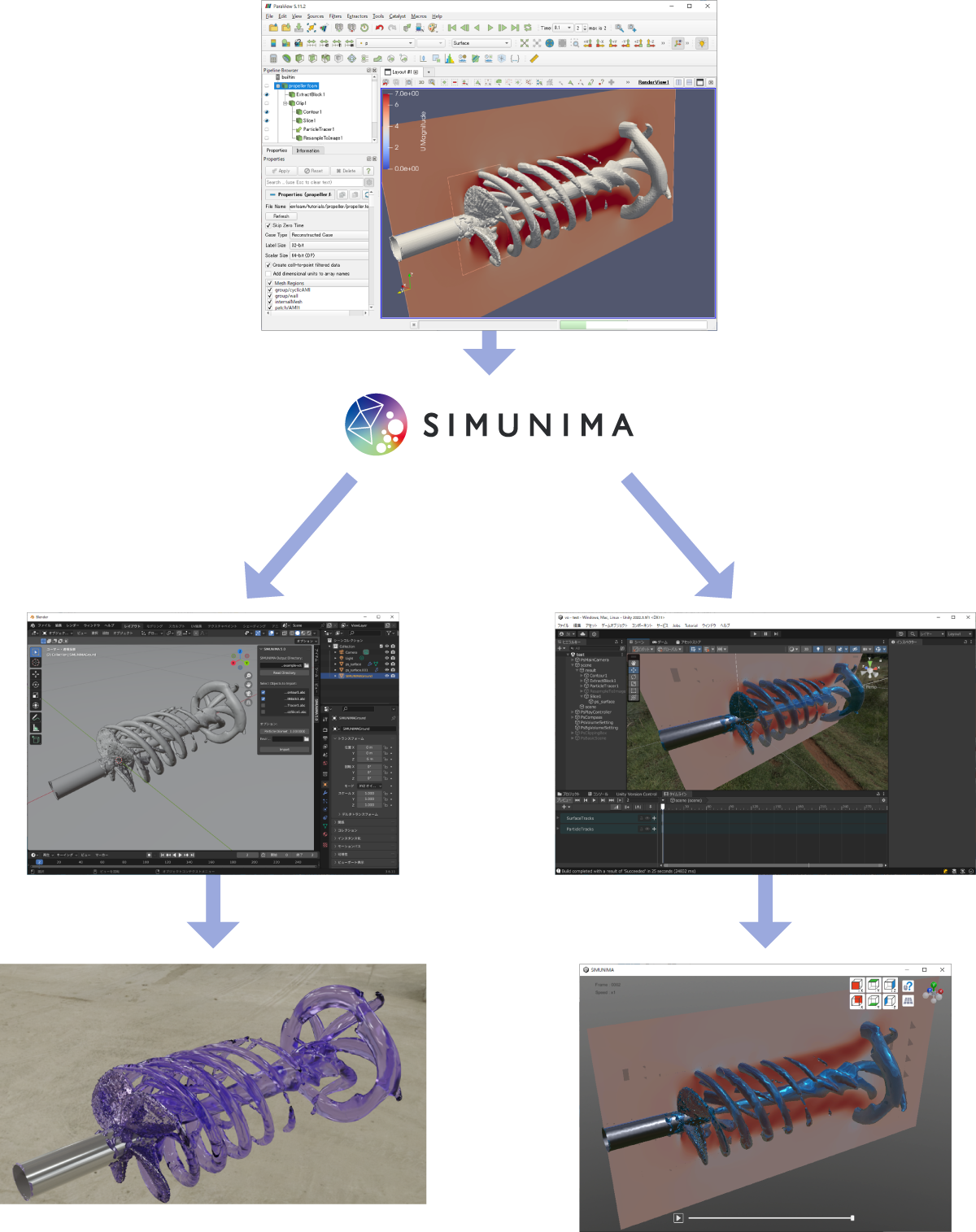
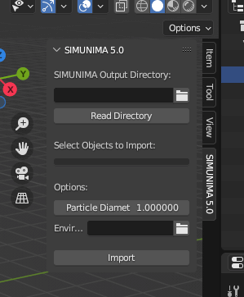
▶︎
▼
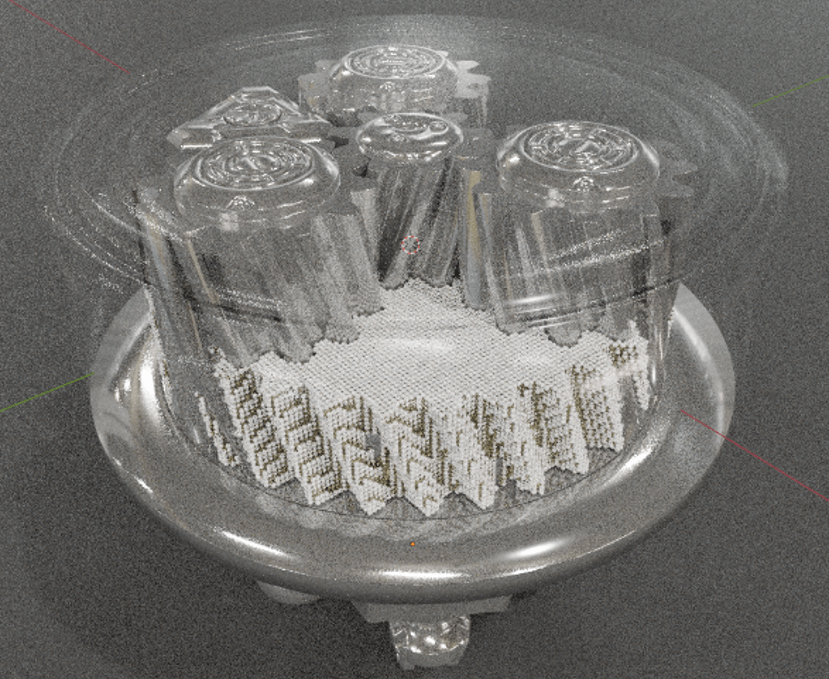
The following functions have been added to the cross-sectional display.

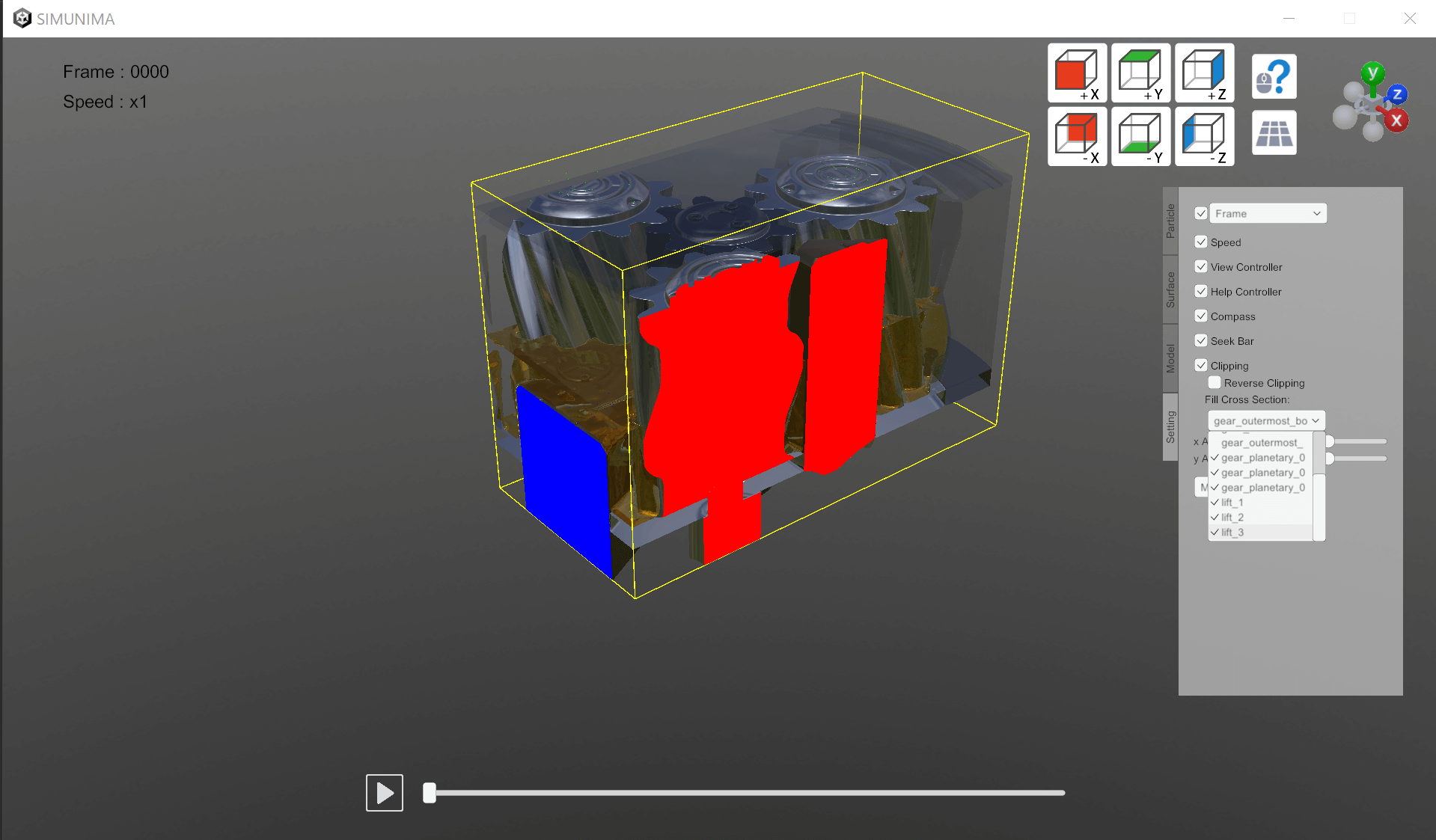
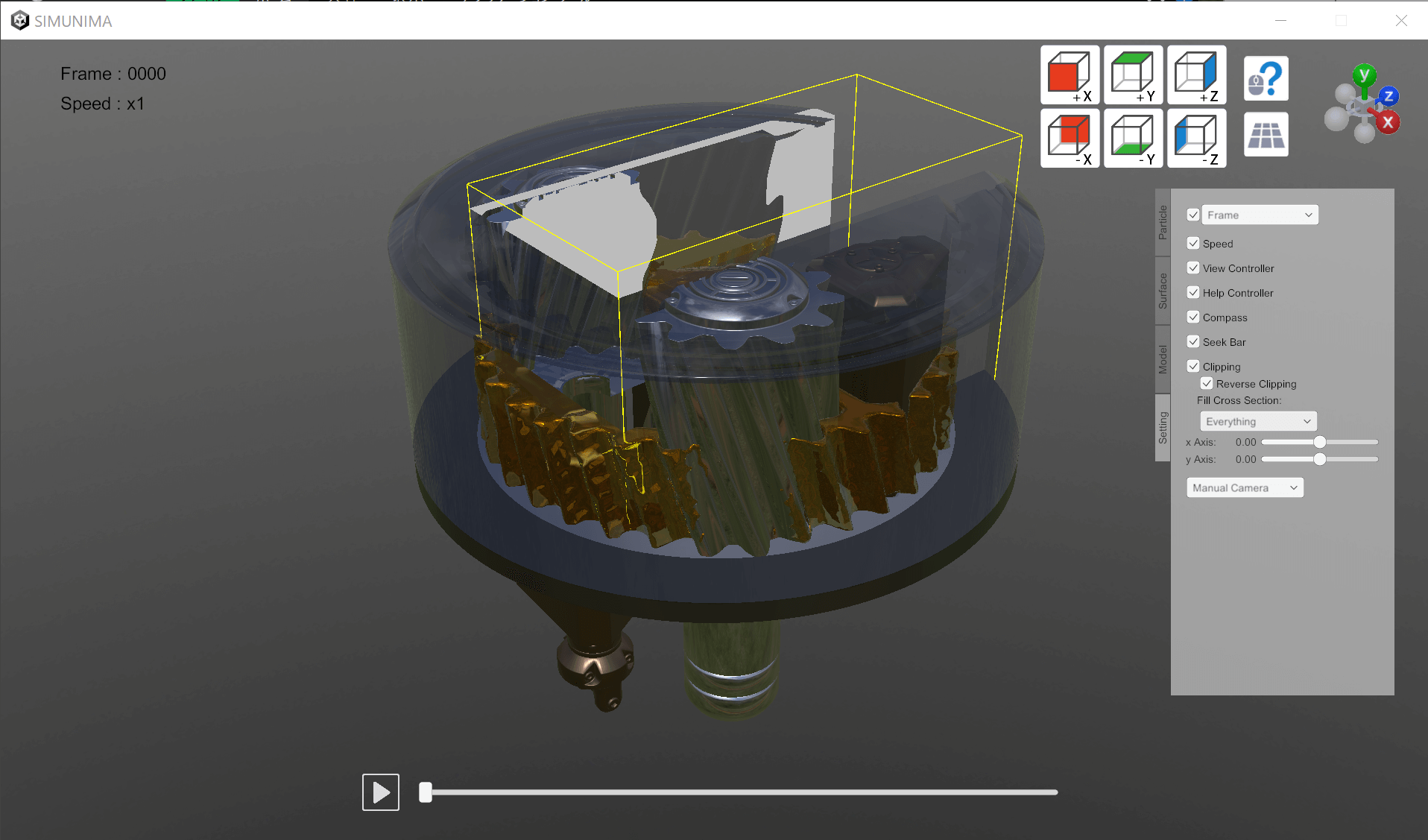
Within desktop application generated by SIMUNIMA for Unity (Windows executable), following feature has been supported.

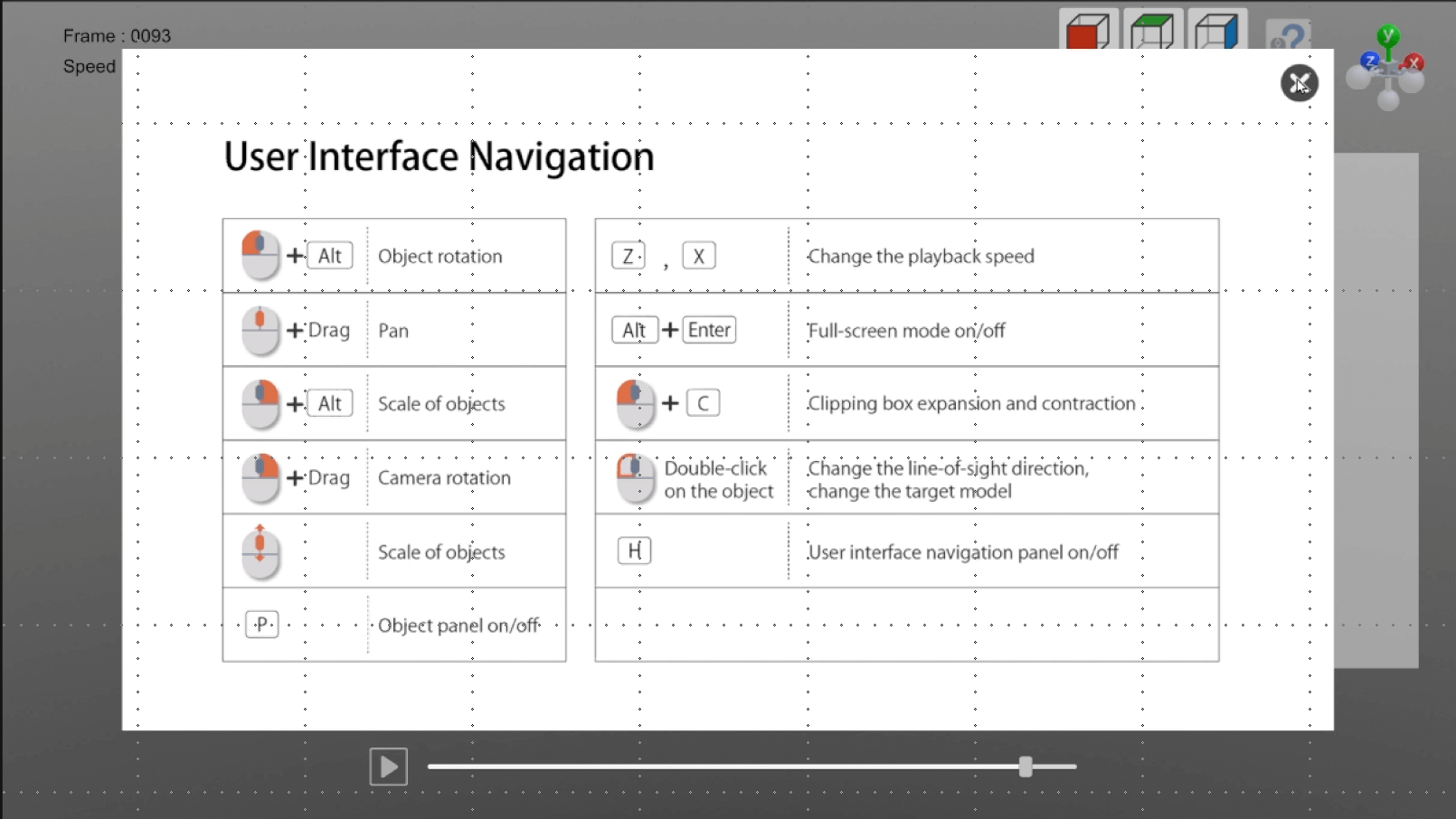
Simply specify the reduction ratio to reduce surface polygon and particle (point) data while preserving the shape. Supports time-series sequential numbering files.
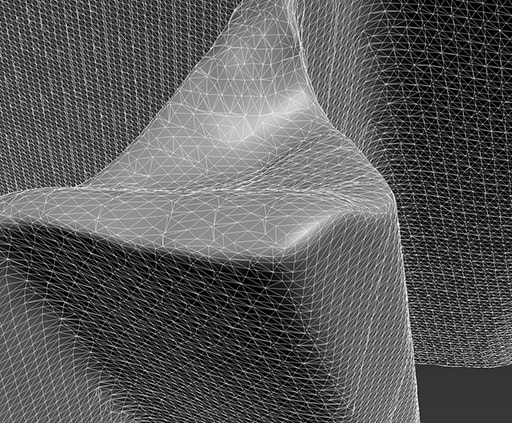
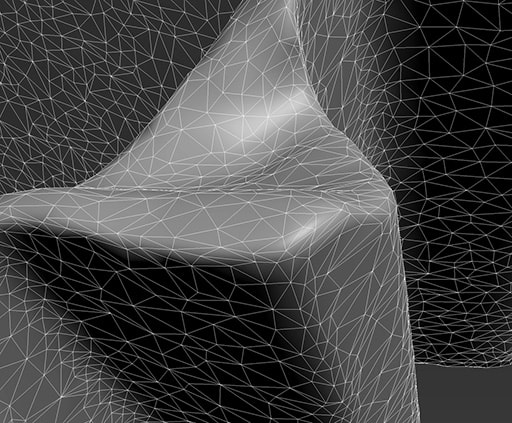
Intuitive GUI for settings and data conversion.
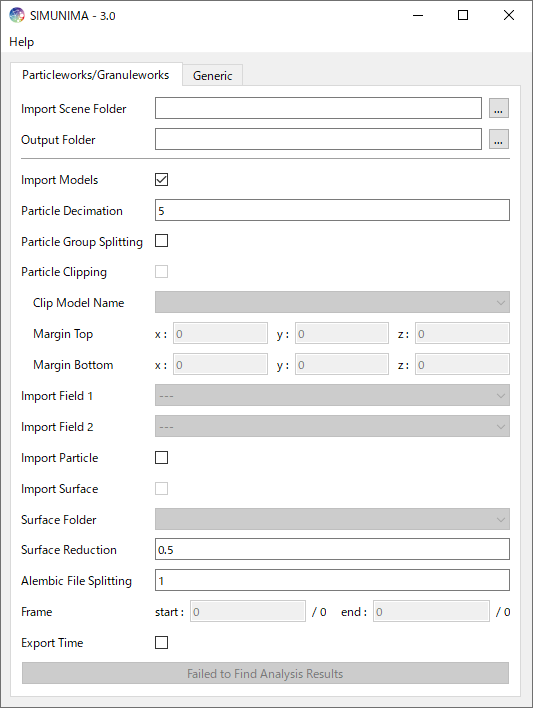
You can convert multiple physical quantities (pressure, density, temperature, and others) to an Alembic file.

This function outputs only particles within the specified area. Set margins for the X, Y, and Z axes based on a rectangular area enclosing arbitrary object, then you can convert and output only particles within the area.
The SIMUNIMA for Unity automatically imports simulation results to set up your scene environment, timeline, cameras, and lights.
Output to video files and in the form of interactive desktop applications (executable files) is possible.
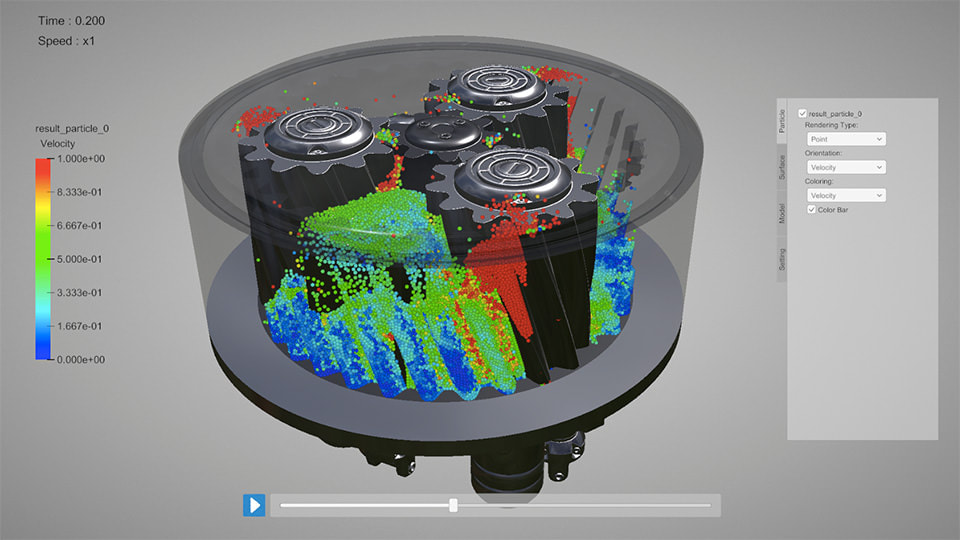
You can display particle method results converted to Alembic particles as particles, vectors, or sphere objects.
Furthermore, for particle and vector displays, you can individually set the color map range adjustment, contour display, and physical quantity used for scaling.
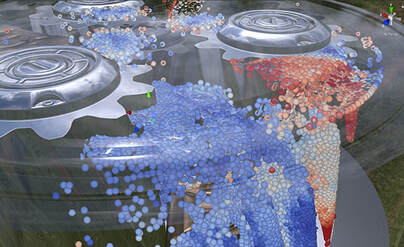
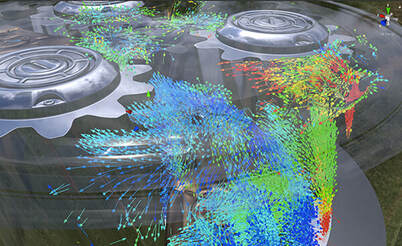
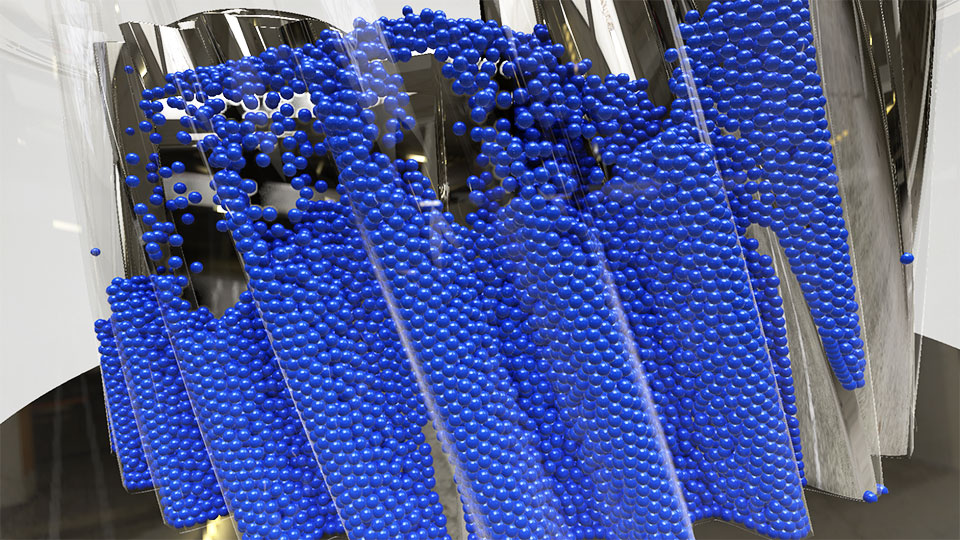
The SIMUNIMA for Unity includes about 30 frequently used materials.

Clipping boxes allows for the display of cross-sections from each axis direction. You can also rotate the clipping box by entering numerical values to obtain an oblique sectional view.
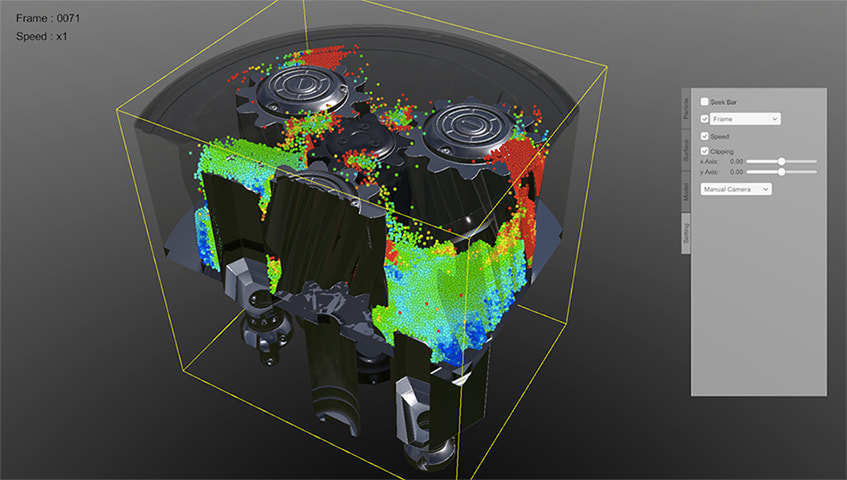
You can convert CSV files containing polygons’ per-vertex physical quantity data to Alembic surfaces.
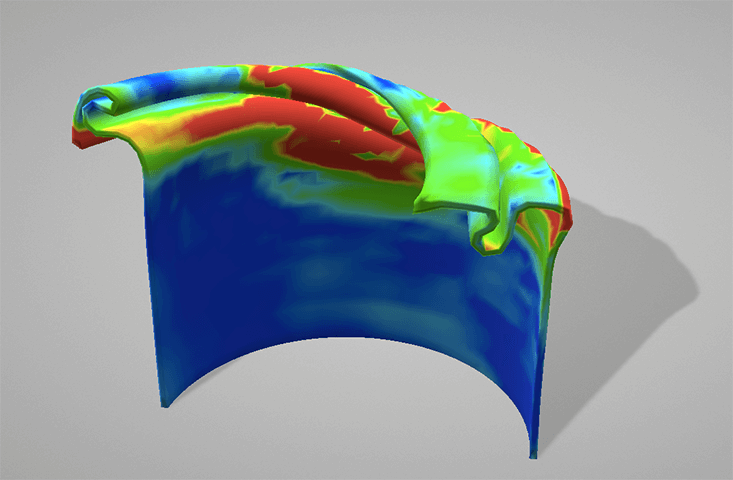
第1回
(69分)
流体の支配方程式
支配方程式とは?/支配方程式を解くための準備/保存法則/連続の式/ナビエ・ストークス方程式/エネルギー式/圧縮/非圧縮性流体の支配方程式の違い/支配方程式の利用法
第2回
(76分)
非圧縮性流体の力学
非圧縮性流体とは?/流量の連続/ベルヌーイの定理/運動量法則/境界層流とは?/
境界層厚さの定義/層流境界層と乱流境界層/境界層のはく離/境界層方程式/
第3回
(71分)
圧縮性流体の力学
圧縮性流体とは?/流量の連続/ベルヌーイの定理/等エントロピー流れ/衝撃波とは?/垂直衝撃波/斜め衝撃波/衝撃波・境界層干渉
1時間目
(76分)
標準的な粒子法とその発展的方法
1. 標準的な粒子法(支配方程式、離散化、アルゴリズム、境界条件)
2. 圧力計算の発展的方法(要会報、圧力振動抑制)
3. 粘性計算の発展的方法(陰解法、非ニュートン流体)
4. 壁境界条件の発展的方法(ポリゴン壁境界条件)
2時間目
(48分)
粒子法を使いこなすための知識
1. 時間刻み幅の決め方(クーラン数、拡散数、数値安定性、計算精度)
2. 乱流の計算方法
3. 温度場の計算方法
トピックス1: 高精度粒子法(LSMPS法)
3時間目
(49分)
粒子法における様々な計算モデル
1. 表面張力モデル(CSFモデル、ポテンシャルモデル、濡れ性)
2. 空気抵抗モデル(有限体積法との連成)
3. 剛体モデル(DEMとの連成)
トピックス2: 可変解像度
4時間目
(69分)
シミュレーションの信頼性を高める方法論
1. V&V(Verification and Validation)とは
2. モデルV&V
3. 品質V&V
4. シミュレーションの品質向上活動(最近の状況)
トピックス3: 津波の大規模シミュレーション
1時間目
(58分)
粒子法による流体解析の基礎理論(その1)
粒子法の特徴と利点/粒子法の種類/粒子法の質量/粒子の位置と速度の初期設定/粒子の動かし方/加速度の求め方/支配方程式
2時間目
(96分)
粒子法による流体解析の基礎理論(その2)
粒子数密度と重み関数/偏微分演算子の近似方法/圧力の求め方/境界条件(自由表面、壁面、流入・流出 等)/物理モデルの紹介(粘性力、表面張力、剛体・流体連成、負圧 等)/検証事例の紹介
3時間目
(57分)
粒子法による流体解析の基礎理論(その3)、粒子法のソースコードの解説
ソースコードのコンパイルと実行(演習)/計算結果の可視化(演習)/シミュレーションプログラムの概説/プログラムの詳細解説(グランディエントモデル、ラプラシアンモデル 等)/パラメーターの設定方法/よくあるトラブルとその対処方法